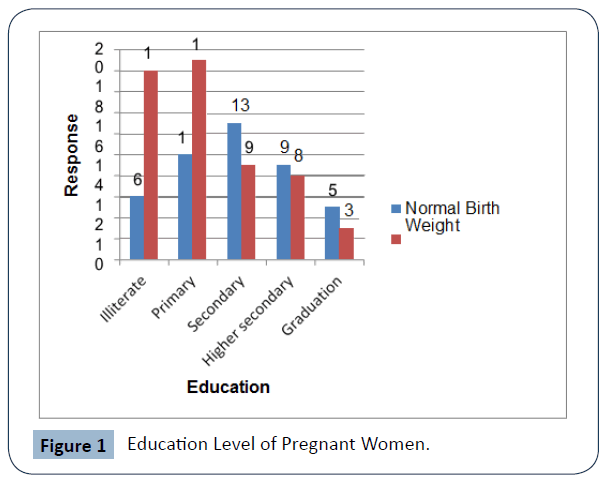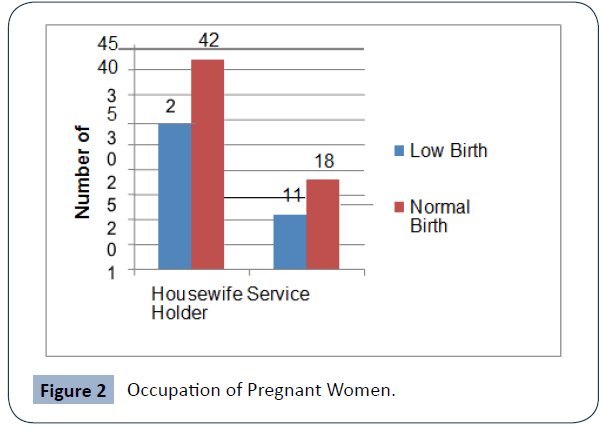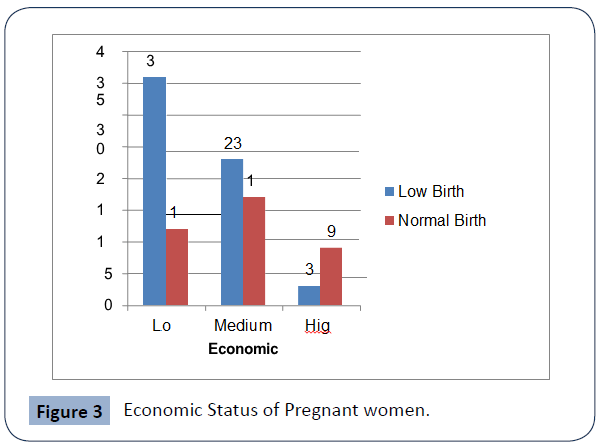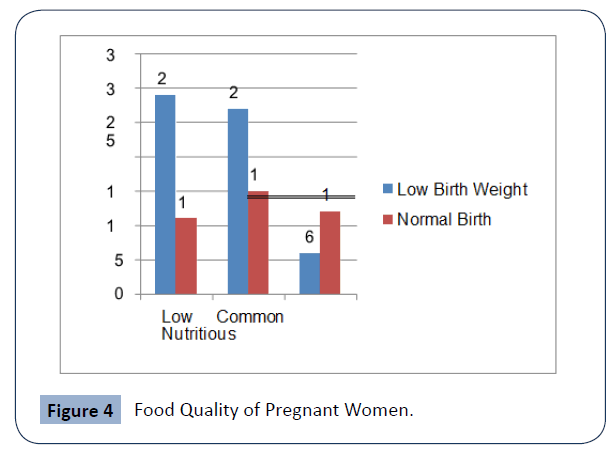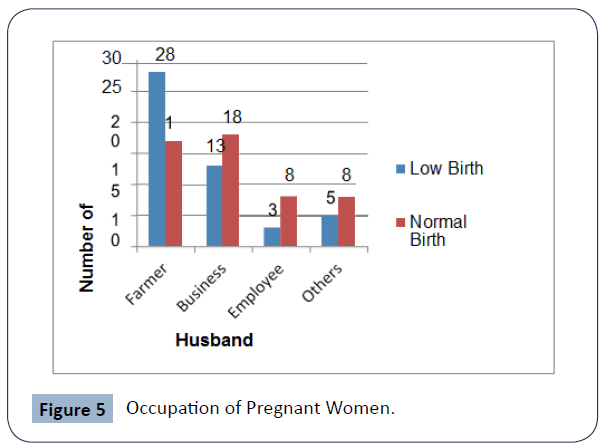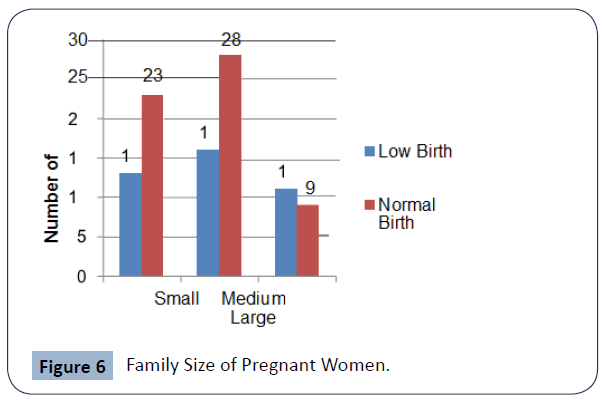Background
In the last decade, the weight index for women has dropped from 19 percent to 34 percent. But at the same time, the rate of overweight women has increased alarmingly from 9 to 24 percent. Meanwhile, the number of women suffering from malnutrition among pregnant women has decreased, but the overall prevalence of malnutrition remains the same due to the increase in overweight and obesity. Therefore, Bangladesh is facing a double burden on malnutrition. Adolescent nutrition is still one of the major problems in Bangladesh. Childhood is a very common phenomenon here, which prevents adolescent girls from becoming full. About 20 percent of girls in Bangladesh suffer from malnutrition. This is especially important, as the birth rate of teenage girls in Bangladesh is the highest in the world. Adequate consumption of required nutrients according to an individual’s age, sex, and physiologic environment, generates the main purpose of nutrition. The World Health Organization (WHO) admits that the process of malnutrition starts in the womb and continues until death. Insufficient and unbalanced nutrition problems especially occur in developing countries at every stage of life and can cause serious health problems if precautions are not taken. Nutrition in various stages between food supply and intake are affected by deficiencies and irregularities in the technology of food production and distribution, socioeconomic and cultural factors, lack of purchasing power, family structure, various customs and traditions, environment, and education.
Nutritional needs increase and nutrition should be consciously considered during pregnancy. Women need to be healthy and have a regular diet before getting pregnant, to facilitate pregnancy, to carry their child until to term, to have her child at normal weight. Insufficient and unbalanced nutrition during pregnancy for babies may result in premature birth, stillbirth, death in the first months after birth, miscarriage, physical abnormalities, and mental retardation; for mothers, death, anemia, tooth decay, thinness or fatness, iodine deficiency, gestational diabetes (GD) [1]. The main purpose in this study was to research the effects of diet on pregnancy and to investigate the awareness of proper nutrition through the evaluation of pregnant women’s’ opinions on dietary habits during pregnancy.
Literature Review
The nutritional status of pregnant women and increase the awareness on pregnant women accomplishing their newborn baby [2]. A provision study has also found a similar trend, with an interrelation between birth weight and maternal age [3,4]. Malnutrition is one of the most serious.
health problems affecting children and their mothers in Bangladesh [5]. Undernourished mothers face greater risks during pregnancy and childbirth, and their children set off on a weaker developmental path, both physically and mentally. The Bangladesh Bureau of Statistics (BBS) conducted a Child and Mother Nutrition Survey (CMNS) in 2005 to assess the current nutritional status of children and mothers in Bangladesh [6-14].
Most authors have shown different causes of the mother over the health of the newborn. But very few authors have discussed the health effects of newborns on the diet of mothers during pregnancy. So our main task is to find out the factors that are responsible for maternity food during pregnancy.
Methodology
Data Collection
We conducted home visits to meet the mothers for face-to-face interviews. The interview was conducted only after consent had been obtained from mother and other family members. During the home visits, the health complex cards were consulted for both cases and controls, for the purpose of collecting more information about the health status of the mothers and the children. However, no anthropometric measurements were taken from interviewers. If a mother was absent from her home during the first survey visit, a second home visit was scheduled for a face- to-face interview, to maximize the number of mothers. One control as well had already left the district at the time of data collection. we collect 100 data data from respondent.
Statistical Tools
Frequency Analysis: We refer to technique used to describe a set of data as descriptive statistics. To put it another way, we use descriptive statistics to organize data in various ways to points out where the data values tend to concentrate and distinguish the largest and the smallest values. The first produce we use to describe a set of data is a frequency distribution. A grouping of data into mutually exclusive classes shows the number of observations in each class. Bar Chart is use in our analysis.
Binary Logistic Regression: The logistic regression model is useful to find out the best fitting, reasonable model to establish the relationship between dependent variable or response variable (dichotomous) and set of explanatory or independent variable (dummy or categorical). Binary logistic regression estimates the probability that a characteristic is present (e.g. estimate probability of "success") given the values of explanatory variables. Probability of success will depend on levels of the risk factor. The logistic regression model more than one independent variable can be written as,
( | ) ( ) is the regression coefficient estimated from data and x is the independent variable.
Odds Ratio: The Odds ratio (OR) can be interpreted as how much more likely it is that an observation is a member in the target group rather than a member of the other group. The null value of odds ratio is 1. If OR=1 this indicates exposure does not effect of outcome. If OR>1 that mean exposure higher associated with outcome and if OR<1 this indicates that exposure lower associated with outcome.

Odds can be formulated as

Results and Discussions
For our study, we collect data from 100. At the first visit, a detailed history regarding her present pregnancy was recorded along with a detailed past obstetric history and family history. This prospective study was conducted to study the effects of food habits on pregnancy outcome. Here baby birth weights consider independent variable. We consider baby weight less than 2.5 kg as low birth weight and weight between 2.5 kg to 4.5 kg as normal birth weight.
Education Level
Education plays an important role for pregnant mother because an educated mother is more conscious about food quality than illiterate mother during pregnancy (Table 1).
| Variable |
Frequency |
Percentage |
| Education Level |
Low Birth weight |
Normal Birth Weight |
Low Birth weight |
Normal Birth Weight |
| Illiterate |
18 |
6 |
75.00 |
25.00 |
| Primary |
19 |
10 |
65.51 |
34.48 |
| Secondary |
09 |
13 |
40.91 |
59.09 |
| Higher secondary |
08 |
09 |
47.06 |
52.94 |
| Graduation |
03 |
05 |
37.5 |
62.5 |
Table 1 Respondent Education Level.
Table 1 display the mother education level. Here the percentage of low birth weight is 37.5% and normal birth weight 62.5% for high educated mother. But illiterate mothers are born with a low birth weight because they are not aware of foods during pregnancy. The percentage of low birth weight and normal birth weight by illiterate mother is 75% and 25%. Graphical presentation also given below Figure 1.
Figure 1 Education Level of Pregnant Women.
Respondent Occupation
Since we are collect data from rural area therefore most of the mother is housewife but also employee women present in rural area. In table-2 shows the distribution of mother occupation Table 2.
| Variable |
Frequency |
Percentage |
| Occupation |
Low Birth weight |
Normal
Birth Weight |
Low Birth weight |
Normal
Birth Weight |
| Housewife |
29 |
42 |
40.85 |
59.15 |
| Service Holder |
11 |
18 |
37.93 |
62.07 |
Table 2 Respondent Occupation.
Table 2 shows most of the respondent are housewife but few number of respondent are employee. In village, those women are housewife percentage of normal birth weight is higher than low birth weight newborn. 40.85% newborn is low birth weight and 59.15% newborn is normal birth weight. In the case of for service holder women also normal birth weight is higher than low birth weight newborn. In Figure-2 given as Figure 2.
Figure 2 Occupation of Pregnant Women.
Economic Status
Our standard of living depends on economic conditions. As a result, the quality of the food depends on our economic situation. Most people in the village are unable to buy nutritious food because they are poor. Most people in the village are low income. Scenery of economic statuation the villege is given below in Table 3.
| Variable |
Frequency |
Percentage |
| Economic Status |
Low Birth weight |
Normal
Birth Weight |
Low Birth weight |
Normal
Birth Weight |
| Low |
36 |
12 |
75.00 |
25.00 |
| Medium |
23 |
17 |
57.50 |
42.50 |
| High |
03 |
9 |
25.00 |
75.00 |
Table 3 Respondent Economic Status.
As we can see above table we found that most of the people in the villege income is low. About 75% newborn baby is low birth weight category for low economic status and 25% newborn baby is normal birth weight. Low percentage for low birth weight baby in high level of economic status because they maintain pregnant mother’s food quality. 25% low birth weight baby born in high economic status but 75% baby is normal birth weight. Figure-3 display economic status as shown below Figure 3.
Figure 3 Economic Status of Pregnant women.
Food Quality
A diet lacking in basic nutritional content has a negative impact on the baby's development. High food quality intake in pregnancy is crucial for the health status of the mother and child. Poor eating habits and excess weight gain may also increase risk of gestational diabetes and pregnancy or birth complications. It is expensive for people in the village to buy nutritious food. Because they somehow fight poverty to survive. The relation between food quality and new born birth weight shown Table 4.
| Variable |
Frequency |
Percentage |
| Food Quality |
Low
Birth weight |
Normal
Birth Weight |
Low Birth weight |
Normal Birth Weight |
| Low |
29 |
11 |
72.50 |
27.50 |
| Common |
27 |
15 |
64.29 |
35.71 |
| Nutritious |
06 |
12 |
33.33 |
66.67 |
Table 4 Respondent Food Quality.
As we can see above table that most mothers in the village do not get nutritious food during pregnancy. As a result, they are unable to produce healthy newborns. Those mother who are eat nutrious food, they are able to born 66.67% normal birth weight baby normal birth weight baby and 33.33% low birth weight. Mothers who are eat low quality food percentage of low birth weight and normal birth weight baby is 72.50% and 27.50% respectively. Graphical presentation shown below Figure 4.
Figure 4 Food Quality of Pregnant Women.
Husband Occupation
Husband is a important person in the life of a woman. All responsible husbands of wives. Humans choose different occupations for livelihood. Depending on the profession, the standard Number of living of the people depends. People of different occupations live in the village. Here the distribution of different occupation of women husband is given below Table 5.
| Variable |
Frequency |
Percentage |
Husband
Occupation |
Low Birth weight |
Normal
Birth Weight |
Low
Birth weight |
Normal
Birth Weight |
| Farmer |
28 |
17 |
62.22 |
37.78 |
| Business |
13 |
18 |
41.94 |
58.06 |
| Employee |
03 |
08 |
27.27 |
72.73 |
| Others |
05 |
08 |
38.46 |
61.54 |
Table 5 Respondent Husband Occupation.
From the Table-5, it appears that a newborn is born of normal birth weight in the employee profession family. Percentage of low birth weight in employee occupation family is 27.27% which is comparatively less other than occupation and normal birth weight is high other than occupation. In occupation of farmer highest low birth weight baby is born due to lack of money and nutrious food. Highest percentage of low birth weight newborn is 62.22%. Graphically also shows the result, Figures 5 & 6.
Figure 5 Occupation of Pregnant Women.
Figure 6 Family Size of Pregnant Women.
Family Size
At present, the size of the family of Bangladesh has become very small. This effect can also be observed in the rural areas. If family size is large, it is not possible to ensure nutritious food for everyone. The size of the family affects the nutritional intake of the pregnant mother. Here the distribution of family size is given below, Table 6.
| Variable |
Frequency |
Percentage |
| Family Size |
Low
Birth weight |
Normal
Birth Weight |
Low
Birth weight |
Normal
Birth Weight |
| Small |
13 |
23 |
36.11 |
63.89 |
| Medium |
16 |
28 |
36.36 |
63.67 |
| Large |
11 |
09 |
55.00 |
45.00 |
Table 6 Respondent Family Size.
From table-6 we show that maximum number family size is medium. But here, in a small family, newborns are more likely to be born with normal birth weight. percentage of low birth weight and normal birth weight in small family is 36.11% and 63.89 respectively. In large family there is more chance to born low birth weight due to lack of nutritious food. Here in large family evidence of less normal birth weight baby and more low birth weight baby which is 45% and 45%. Show it through the graph.
Binary Logistic Regression Model
In our data birth weight is dependent variable which has two categories, low birth weight (<2.5 kg) and normal birth weight (2.5 kg-4.5 kg). Now we fit a logistic regression model for dependent variable birth weight against independent variable mother education level, Occupation, Husband occupation, economic condition, food habit and family size. To fit the birnary logistic regression we use R software version 3.6.0 After fit the logistic regression model we get the following result, Table 7.
| Variable |
P-value |
Odds Ratio |
| Education Level |
Illiterate Primary Secondary
Higher secondary Graduation |
0.038*
0.026*
0.000*
0.000* |
1.90
1.55
1.98
2.14 |
| Occupation |
Housewife Service Holder |
0.051 |
1.21 |
| Husband Occupation |
Farmer Business
Govt. Employee Others |
0.039*
0.009*
0.042* |
0.89
1.03
1.47 |
| Economic Condition |
Low Middle High |
0.011*
0.000* |
1.37
2.08 |
| Food Habit |
Low quality food Common food Nutritious food |
0.019*
0.000* |
1.20
3.25 |
| Family Size |
Small
Medium Large |
0.154
0.117 |
0.809
0.983 |
Table 7 Fitted logistic regression Model.
From the table-7 we show that 4 variable are highly correlated to the newborn. Except for 2, the remaining 4 variables are responsible for the nutrition of the mother during pregnancy, which affects the health of the baby. Odds ratio interpret the above result how much affect to the newborn health. If we consider the education level, we interpret those women who have primary education 1.9 times more likely to concious about food habit during pregnancy compare to Illiterate women. Similarly we can interpret other variables by odds ratio. P-Value also indicates the significant level for the factor that affect women food habit and newborn baby health status.
Conclusion and Recommendation
The result of the study indicates that the recent status of mothers, looking at the situation of mothers since 1990 women are more concern about education, health and their families. But early marriages still continue. This study has discovered that there are basic, underlying and immediate causes that act at various levels of society and which contribute to the occurrence of women’s early pregnancy and complications in Gopalganj districts. There is a need for urgent interventions to prevent and mitigate the problems that mothers face in pregnancy time and after giving birth of the newborns addressing all the identified factors.
In the study we see that the educational status of women have increased remarkably than 1990’s. But the maximum of them dropped at secondary level. We have found illiterate 24%, Primary 29%, secondary 22%, higher secondary 17% and graduate 8%. Among them 71% women are housewives and 29% service holders. This is very low percentage of involving in economical contributions of women for their families. As the country improves, the standard of living of the people of the city has changed, but the standard of living of the people of the village has not changed much. From our research we find that only 18% of people eat nutritious food and 48% of people eat simple village food. Most of the people in the village live in poor economic conditions. Most of the people in the village live in poor economic conditions. As a result, it is impossible for them to eat nutritious food. Here 48% people live low economic status and only 12% people standard of living is high. The size of the family does not have much effect on the diet of the pregnant mother, as many factor sdo. From our study, we found that the health of a newborn depends on the diet of the mother during pregnancy. Based on the finding, the following recommendations were forwarded:
• Education facilities should be increased for girls that are why parents will be inspired to send their girls and the authorities should do campaigning to increasing awareness.
• Local government should take projects that mothers can make financial contribution for their family without going anywhere.
• Rural health complex should be made to help the rural mothers and make the facility of telecommunication to take advice from expert doctors.
• Mothers will need to be informed about what kinds of food need to eat during pregnancy. For this, the government has to adopt various programs.
References
- Aksit MA (1991) Nutrition and Health In: ÜstünoğluÜ, Introduction to Nutrition. Anadolu University Open Education Faculty Publications: 5–13.
- Allen L, Gillespie S (2001) What works? A review of the efficacy and effectiveness of nutrition interventions. United Nations Administrative Committee on Coordnation Sub-Committee on Nutrition, Asian Development Bank. ACC/SCN Nutrition Policy: 19.
- Baysal A Beslenme (1999) Ankara: Hatipoğlu printing and publishing industry: 8.
- Bangladesh Healthcare Crisis: BBC News. (2012)
- World food programme: Effects of the Financial Crisis on Vulnerable Households, Bangladesh (2009)
- World Bank in Bangladesh. (2008)
- Children and women suffer severe malnutrition: The New Humanitarian (2008)
- Keeping JD, Morrison J, Esler BJ (1979) Analysis variance and the linear additive mode. Bri J obstetgynaecol 437-442.
- Maidya RN, Gulati PV, Chablani TD (1970) Influence of socio-economic and environmental factors on birth- weight. Indian J Med Res 58 : 651-9.
- Pekcan AG, Aslan P. Maternal and child nutrition. Anadolu University 2336: 44-45.
- Rahman, Md Hafizur , Islam, Karim M, Ud-Daula M, et al. (2013) A study on nutritional status of pregnant woman in south-west region of Bangladesh. Int J Appl Pharm Sci Res 3: 54-58.
- www.bbs.gov.bd
- https://en.wikipedia.org/wiki/Poverty_in_Bangladesh
- https://www.unicef.org/bangladesh

